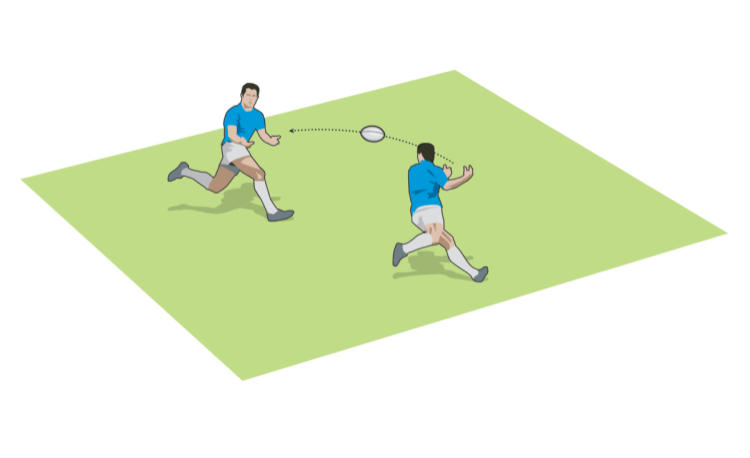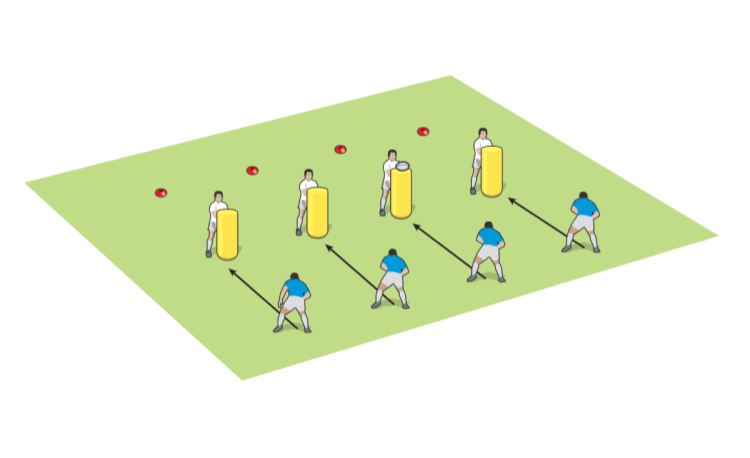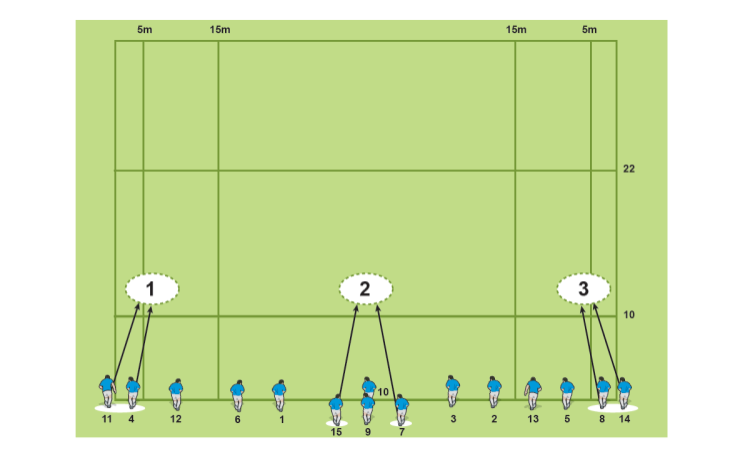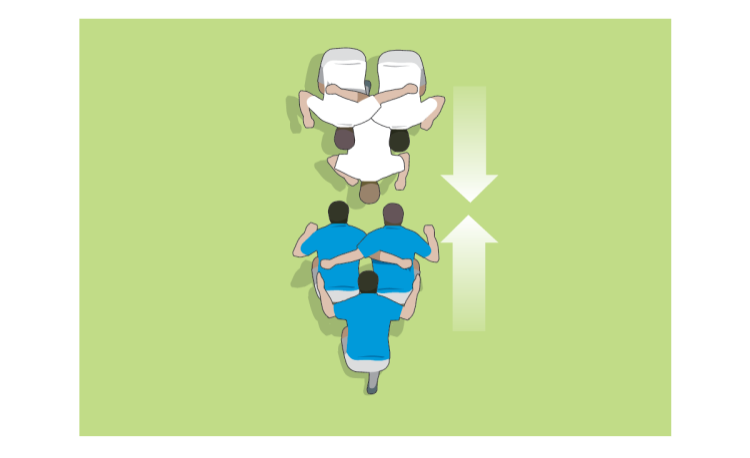You are viewing
1 of your 2 free articles
Handling different defences - three scenarios
Attackby Rob Appleyard
Use all your handling skill options in these three attacking scenarios. The outside backs need to communicate clearly where the spaces are to help the inside backs make the right decisions.
This exercise challenges an attack – initially with a one-player advantage – against three types of defence: drift, blitz (rush) and dog-leg. Let the players use their handling skills, plus ask them how to beat each defence.


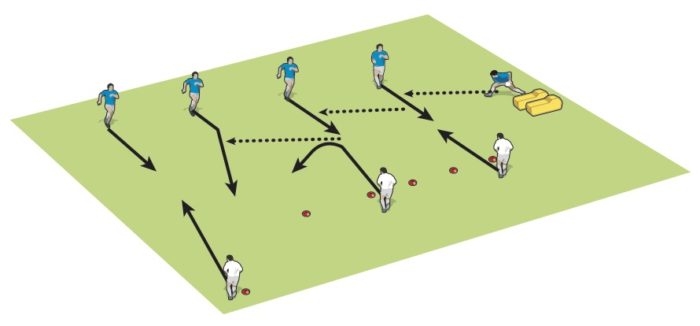
Use urgent communication to tell the inside backs where the space is l Fix the defence on the inside with straight running before passing
This exercise challenges an attack – initially with a one-player advantage – against three types of defence: drift, blitz (rush) and dog-leg. Let the players use their handling skills, plus ask them how to beat each defence.
SET UP
- Have four attackers and a feeder (scrum half) line up.
- Using ruck pads (or tubes or cones) to indicate a ruck, a feeder passes the ball to the attacking line.
- Change the width of the area to suit the skills of your players.
HOW TO DO IT

- Condition the defence, in this case in a drift formation.

- In this scenario, the defence comes from out to in.
- The cones help indicate the defenders’ starting points.

- In this scenario the defence starts with a dog-leg (that is, one player back).
- First, ask both groups to run into position, counting down until the feeder can pass the ball. Condition the defence each time.
- Second, increase the intensity of the tackling, so the attackers can use offloads, fends and footwork to beat the defence.
TECHNIQUE
Use urgent communication to tell the inside backs where the space is l Fix the defence on the inside with straight running before passing
Newsletter Sign Up
Coaches Testimonials

Gerald Kearney, Downtown Las Vegas Soccer Club

Paul Butler, Florida, USA

Rick Shields, Springboro, USA

Tony Green, Pierrefonds Titans, Quebec, Canada
Subscribe Today
Be a more effective, more successful rugby coach
In a recent survey 89% of subscribers said Rugby Coach Weekly makes them more confident, 91% said Rugby Coach Weekly makes them a more effective coach and 93% said Rugby Coach Weekly makes them more inspired.
Get Weekly Inspiration
All the latest techniques and approaches
Rugby Coach Weekly offers proven and easy to use rugby drills, coaching sessions, practice plans, small-sided games, warm-ups, training tips and advice.
We've been at the cutting edge of rugby coaching since we launched in 2005, creating resources for the grassroots youth coach, following best practice from around the world and insights from the professional game.
More from us
© 2023 Rugby Coach Weekly
Part of Green Star Media Ltd. Company number: 3008779
We use cookies so we can provide you with the best online experience. By continuing to browse this site you are agreeing to our use of cookies. Click on the banner to find out more.






